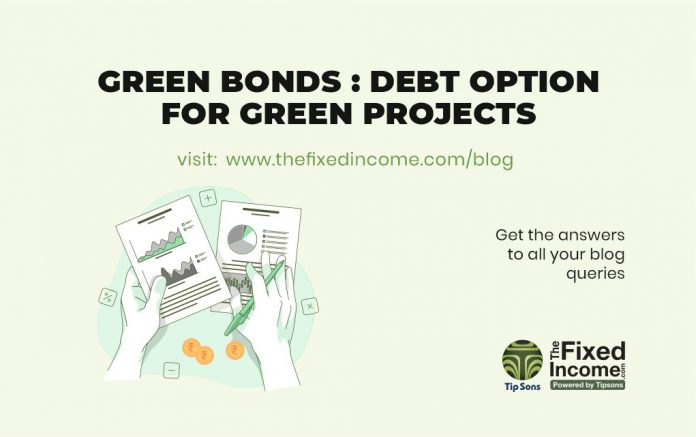During times when the world is running out of its natural resources and worrying about carbon footprint and climate change, environmental sustainability and ESG (environmental, social, and governance) concerns have been the talk of the town. While many companies have been and are tracking their carbon footprint, and many others working to raise awareness and voice concerns over climate change and global warming, the financial world has not been left behind. Governments and corporations have been seeking viable and environmentally sustainable options to raise debt to fund the so-called “green projects”.
Green Bonds: Financing Environmental Sustainability
Green projects primarily refers to renewable and sustainable energy, clean transportation, sustainable water management, climate change adaptation, energy efficiency, sustainable waste management, sustainable land use, and biodiversity conservation.
With nations across the globe focusing on sustaining partially on renewable energy at some point in time, India has set a target of generating 450 gigawatts of renewable energy by 2030. With the traction renewable energy projects have gained in the recent past, so have the investor group looking to invest in green projects only.
Renewable energy, being the need of the hour, has a dedicated pool of global investors who are focused on funding ESG projects. Paving way for “Green Bonds“, where a bond issuer can now tap into those global investors who otherwise would have been off limits, and only if the funds are utilized for the said purpose of funding environmental, social, and governance projects.
Green bonds! Yes, you heard it right.
Green bonds, a debt security or a fixed income security, were first issued in India back in 2015 by Yes Bank and were used to fund infrastructure projects in clean and renewable energy.
In all forms and shapes, Green bonds are identical to regular bonds, with only exception being the usage of funds which is restricted to green projects. Green bonds also enjoy the benefit of tax exemption, as the coupon payments are exempt from any income tax.
Securities and Exchange Board of India (SEBI) issued a circular in 2017 around disclosure requirements for issuance and listing of debt securities as Green bonds.
SEBI Mandate and Disclosure Requirements for Green Bonds
SEBI mandates that a bond issuer can only classify a specific bond as a “Green bond” once the bond issuance meets the required eligibility criteria of being classified as a Green bond. SEBI has outlined certain disclosure requirements for Green bond issuer’s, including the eligibility criteria.
Few key aspects from SEBI mandate are: a) a Green bond issuer will have to clearly state the purpose for which the funds are being raised, and what portion of those funds will be utilized towards the green projects; b) the bond issuer will also have to identify the category of the green projects, as defined by SEBI, within which the bond issuers said green projects fall into, enabling eligibility for funding by investors who solely invests in green project; c) outline environmental sustainability objectives.
As of Sept 2021, global issuance of Green bonds in 2021 has been at staggering $777.6 billion. And within emerging markets (EM), India is the 2nd largest market of Green bond issuance.
2021 witnessed a rise in the issuance of Green bonds around the globe. Some key Green bond issuances in India in the current year includes: ₹150 crore of Green bonds issued by the Ghaziabad Municipal Corporation in April 2021, becoming the first municipal in India to issue a Green bond; JSW Hydro raised ₹5,187 crores via Green bond issuance in May 2021; Power Finance Corporation issued India’s first Euro Green bond worth 300 million in Sept 2021.
Global warming and climate change were the key contributors steering the path towards the need for a sustainable environment. Covid only added further fuel to it, more of a reality check. About time, each one of us monitors our carbon footprint, and contributes towards a greener environment.























